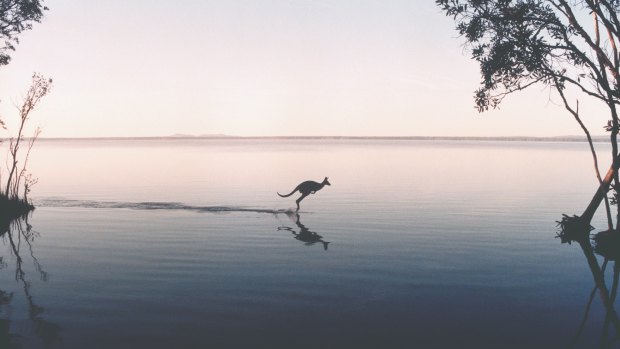This was published 5 years ago
Noosa Everglades, Queensland: Not just beaches - Noosa's other natural attraction worth seeing
By Mark Chipperfield
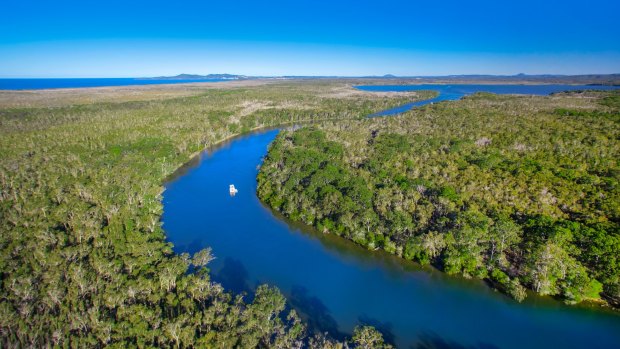
Aerial view of Noosa Everglades.
Think Everglades and images of menacing alligators, endless sawgrass marshes, speeding hovercraft and, perhaps, a certain crime investigator with polished Ray-Bans come to mind. Cue in The Who's famous rock anthem Won't Get Fooled Again and the picture is complete.
Now Florida's most celebrated wetlands, the jaw-dropping Everglades National Park, has a smaller but equally fascinating antipodean rival. Wedged between Lake Cootharaba and Fraser Island on Queensland's Sunshine Coast, the Noosa Everglades is a vast area of wetlands, eucalypt forest, mangrove swamp and slow-moving waterways which now delights in the name The River of Mirrors.
"What we are approaching is the oldest and largest system of sand dunes in the world," explains Dave Mengel, our Everglades Eco-Safari guide, as we chug slowly across Lake Cootharaba towards the 150,000 hectare Noosa Biosphere. "These sand dunes are 800,000 years old and came north from NSW – in fact, they are still on the move, travelling about one metre a year, according to the scientists."
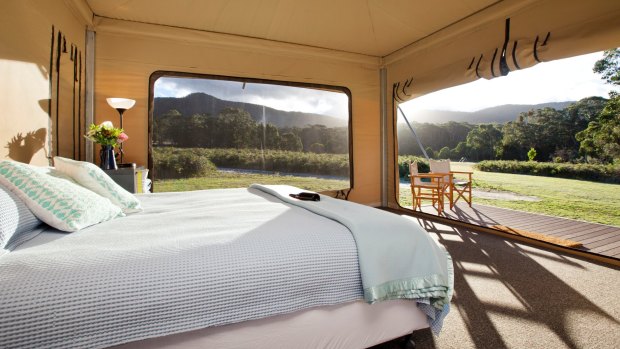
Glamping tent at Habitat Noosa.Credit: Jayne Newgreen
Mengel has been taking visitors into the Noosa Everglades, part of the Great Sandy National Park, for the past 15 years and his knowledge of its intricate network of creeks, lakes and waterways is invaluable – it's easy to become lost in this watery labyrinth.
"I have enormous respect for the indigenous people, the Gubbi Gubbi, who lived here successfully for thousands of years," he tells the mixed party of British, Dutch, Italian and Chinese passengers aboard the whisper-quiet MV Lake Cootharaba. "Not only were they great hunter gatherers, the Gubbi Gubbi know how to use every plant, flower and tree in the forest."
Without access to sweets and chocolates, the children of the Everglades used to lick pollen from the flowering bottlebrushes along the riverbank.
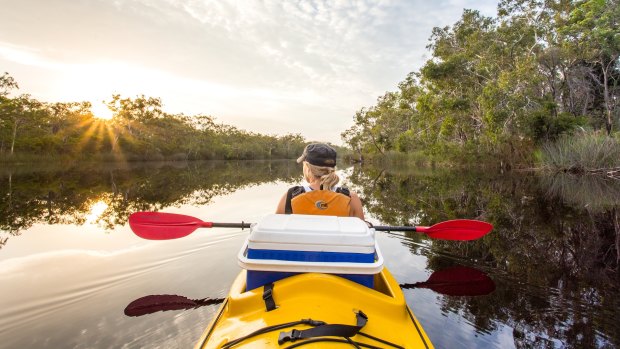
Kayaking the Noosa Everglades.
"They couldn't just pop down to the supermarket like we can," says Mengel.
Treasured by locals for their isolation and tranquility the Noosa Everglades is also home to a dazzling array of birds, marsupials, fish and other native animals, such as wallabies, kangaroos, dolphins, skinks, goanna, flying foxes, and the elusive dugong – but happily it's too far south for crocodiles.
According to the official literature there are more than 300 species of bird in the Noosa Biosphere, including rainbow lorikeets, glossy black cockatoos, doves, kites, buzzards and white-breasted sea eagles; it's been estimated that almost half of Australia's bird species can be found here."We have half a dozen species of cormorants alone," says Mengel.
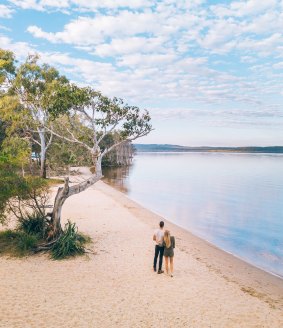
Lake Cootharaba.
Given its aquatic disposition hiring an ocean-going kayak (these are available from Habitat Noosa, Elanda Point) is the obvious way to explore the Everglades. There are also hiking trails and several good campsites dotted along the lakeside and inside the national park. Those with more limited time should book the guided Eco-Cruise, which also operates from Elanda Point and includes a rainforest hike, some canoeing, morning tea and a generous two-course lunch on your return to Habitat Noosa.
Although passengers can take advantage of the complimentary shuttle bus from Noosa, it's worth booking into Habitat Noosa's spiffy new glamping accommodation for a total eco-immersion. The five Paperbark tents come with hot showers, flushing toilets, overhead fans, queen size beds, a bar fridge, lockable doors and private wooden decks. The lakeside site includes a kiosk, bistro and bar, climbing wall and a fully functioning microbrewery; its tropical-style pale ale is perfect after a day on the water.
Coothara Bar, which opens for lunch and dinner, offers contemporary bistro fare, such as beer braised lamb shanks and wagyu burger, plus a special kids' menu and some fantastic desserts, including a wicked coconut panna cotta. There's a huge outdoor terrace and a cosy indoor bar with a log fire for Queenslanders who cannot bear any drop in temperature.
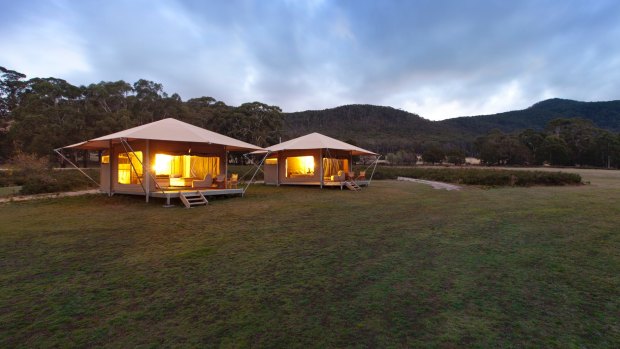
Glamping in the Everglades.
After a day of adventure in the Everglades, not to mention a handsome meal and a couple of pale ales, it's easy to drift asleep in your handsome Paperbark tent, while the gentle rain pitter-patters on your reliably waterproof canvas roof.
TRIP NOTES
Mark Chipperfield travelled courtesy of Habitat Noosa and Tourism Noosa.
Accommodation at refurbished Habitat Noosa ranges from camp sites to stylish Paperbark glamping tents, which offer ensuite bathrooms, Queen-size beds, fridges and air conditioning. Couples from $250 a night. The eco camp, which is about 40 minutes by car from Noosa, offers a kiosk, bistro and on-site micro-brewery. Canoes, stand up boards and tinnies are available for hire on the foreshore. See habitatnoosa.com.au
ECO-CRUISE
Daily cruises into the Noosa Everglades leave from Elanda Point at 9.30am, returning at 3.30pm. The cruise includes a short hike, a five kilometre kayak adventure, morning tea and lunch. Shuttle bus transfers from Noosa available. See habitatnoosa.com.au
Sign up for the Traveller Deals newsletter
Get exclusive travel deals delivered straight to your inbox. Sign up now.
